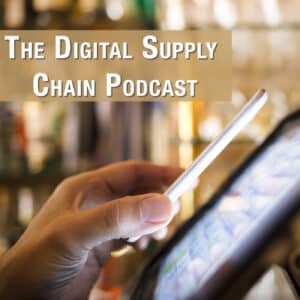In Forbes, James Crean provides insight into why American manufacturers must prioritize local supply chains and the implementation of Smart Factory Technology in their manufacturing.
By Kenneth Rapoza
Success is the best revenge.
One of the only ways the U.S. can ‘beat’ China post-coronavirus isn’t in a roaring stock market where most Americans aren’t making their fortunes, or their livelihoods. It’s in bringing manufacturing back to the U.S.
Some of this is already happening. Some pharmaceutical makers have moved out of China and into the Carolinas. It’s a start.
Getting blue collar labor back to work at jobs that pay much more than an Amazon AMZN -1.8% warehouse worker in relatively depressed parts of the country — from upstate New York on to the old manufacturing hubs like Detroit — is a must win for the U.S. labor force. Learning to code is not going to cut it. Getting woke is not going to pay the rent, or make dreams come true.
Giving people the opportunity to make a living in industries that are growing, and thriving, will cut it. It won’t matter who is leading the country.
China has done this for at least two generations now. It has kept their politicians from being overthrown. Watch Chinese factories all hightail it out to Bangladesh and Vietnam and suddenly the story there changes.
As it has here. Protecting the American worker and promising them support from a dying blue collar job market has been a political fist fight since the 1980s. What has come out of it?
Manufacturing labor has largely been hollowed out. It is making a comeback.
Here’s how manufacturing firms can double their efforts to make stuff here, right at a time when the country is sure to struggle through the pandemic and needs all the good paying jobs — with a future — that people can get.
The Smart Factory Is The Solution

Where is everybody? Robotic arms work on an assembly line at a factory of Great Wall Motors on June … CHINA NEWS SERVICE VIA GETTY IMAGES
James Crean has an idea. He’s not alone. He is the founder and president of Austin based CREAN Inc., a technical services firm operating in the latent field of smart factory solutions.
The 18 year old CREAN is on the front-lines of major industry overhauls as a result of the coronavirus pandemic and the trade war with China.
He’s in the right space. The way to make the U.S. more attractive as a manufacturing center is through smart factory — a data driven, just-in-time, customizable way to build at a lower cost than traditional assembly line manufacturing that often ends up storing unsold goods in warehouses.
That’s the simplest definition.
“Quality and flow factor come out of a lean manufacturing business sense. And smart factory just takes things to the next level because it allows you to have visibility and insights. You gain more control over production than you normally would have,” he says.
Europe has this. Especially Germany. They have done well with smart factory technology there for their automotive parts and capital goods industries.
China has been adopting smart factories lately and is ahead of the U.S. because the U.S. model for so long has been to just make everything in China. Those days are changing as the pandemic showed just how much risk has been glossed over in making everything in China.
Chinese labor as of last year was about 1/6 the cost of U.S. labor, but U.S. productivity is 8 times China’s productivity. Even with all the deregulation under President Trump, companies should be more competitive if you layer on top of that smart manufacturing which China is already doing. China can make anything just-in-time and custom-to-order. Plus they have a supplier network that they can draw from easily. It makes them indispensable. Unless the U.S. adopts this too, China will always be the go-to.

The cargo ship Seaspan Zambezi pulls into port in front of the Verrazzano-Narrows Bridge as the sun … GETTY IMAGES
The Fourth Industrial Revolution
There is a transformation of the industrials sector going on right now. It’s the Fourth Industrial Revolution. And it will have major implications for small and mid-sized firms that are domestically focused and may struggle to compete with companies abroad who can make similar goods for less.
The manufacturing world is becoming more digital. Lockdown measures have forced many businesses to change fundamentally the way they buy and sell goods and services, which is accelerating digital adoption rates.
“After Covid-19, we believe companies will start to localize some of their production,” says Alexander Stiehle, an analysts for UBS. “Factories will need to be more digitalized and automated to produce smaller quantities efficiently with localized manufacturing. The Industrial Internet of Things, 5G, and industrial software are all key enablers of the transformation to smart manufacturing.”

5G. Asia is leading this. Where is the U.S.? (Photo by VCG/VCG via Getty Images) VCG VIA GETTY IMAGES

5G. China leads. Where is the U.S.? (GETTY IMAGES)
This move out of China, which the hawks refer to as “decoupling”, also represents a paradigm shift in global manufacturing. It moves away from focus on labor arbitrage which has been the case over the last few decades, to a more high tech, customizable, just-in-time manufacturing center that is nearby.
Localizing efforts could boost new factory construction, which could benefit companies exposed to general machinery and automation and robotics technologies that help improve new plant productivity, thinks Stiehle from UBS.
“Expect new plants to have a higher level of automation,” he says.
That doesn’t mean we are all living in Wall-E’s world, where robots make everything and we get fat and lazy and live our lives in virtual reality. Someone has to make, manage and produce alongside those machines. The pay will be better than the jewelry department at Macy’s M -0.7%. It will be better than stacking shelves for Jeff Bezos on a cement floor in steel toe boots all day, too.

Maria Dafonte, an A123 Systems employee solders a printed circuit board at the company manufacturing … [+]
BOSTON GLOBE VIA GETTY IMAGES
Inflection Points, Cultural Gaps
An inflection point is imminent. The trade war, which may end in a Joe Biden president, has given way to the pandemic. The pandemic shut Americans off from chemicals, pharmacological inputs, medical equipment. This can’t go on.
Small and mid-sized businesses, stuck at home with a shrinking market, went global in some cases. This trend will increase thanks to the connectivity of manufacturing equipment; the use of industrial software like the kind of software CREAN produces; and real-time data analytics in the manufacturing process.
All components will permanently change how companies run their factories and influence the business models of equipment suppliers, and all of this will lower cost even if corporate taxes are higher than they are now.
New business models based on smart manufacturing may hurt the firms that don’t have the management resources, IT knowledge, or funding to prepare for this environment. But there is clearly upside for companies that integrate smart factories and customizable, fast delivery expertise into their product offerings, UBS wrote in a report dated June 17.
Small and mid-sized businesses making widgets must act now to digitize their equipment; says Stiehler. “It could be too late in a few years’ time,” he says.
The experience from the current pandemic, more than the trade war, has made it obvious that businesses have put too much risk in their reliance on China.
Whether they leave China and come to the U.S. is unknown, but those that do will likely be using highly technological processes or some form of smart factory manufacturing to make localism cost-effective and — on the other hand — good political public relations.

Workers operate intelligent scans on electrical automation production lines in Guizhou, China, on … [+]
BARCROFT MEDIA VIA GETTY IMAGES
As the new generation of Americans heads into the managerial class, their comfort with technology will only help propel the fourth industrial revolution. It is this revolution that can help build a solid, blue collar labor market in the U.S., as opposed to a blue collar labor market dependent on the low wage services sector.
“Many companies were diversifying their supply chain out of China because of the trade war or higher costs in China. But the pandemic has everyone realizing that it is an economic imperative to use smart factory technology if they want to compete with Asia and do things affordably here,” says Crean.
“If you use smart factory technology, you can be more flexible. You’re dominating competitors that have not adopted this technology,” Crean says. “It’s not about automation, or just about automation. It’s about collecting the right process data to drive down cycle times and that drives up efficiencies. And that will be the differential between old school manufacturing and smart manufacturing that can make things on ‘Amazon time’,” he says, as in fast delivery.
“You can order something on Amazon, and it’s probably already sitting in a China warehouse. They have sophisticated logistics and so they can get it to your house in a few days,” says Crean. “The future will be getting custom products that can be delivered in the same speed as by boat from China, and even faster. Build a local, flexible supply chain. That is going to be the game changer.”
CREAN, Inc., is an American company focused on helping businesses implement Smart Factory technologies that increase efficiency and profits. As an aerospace innovator with a passion for driving the implementation of Smart Factory technologies in the U.S., CREAN, Inc. supports some of the largest Fortune 100 companies in the world and works with entrepreneurs in engineering new innovative systems to produce them faster and more efficiently than competitors.



